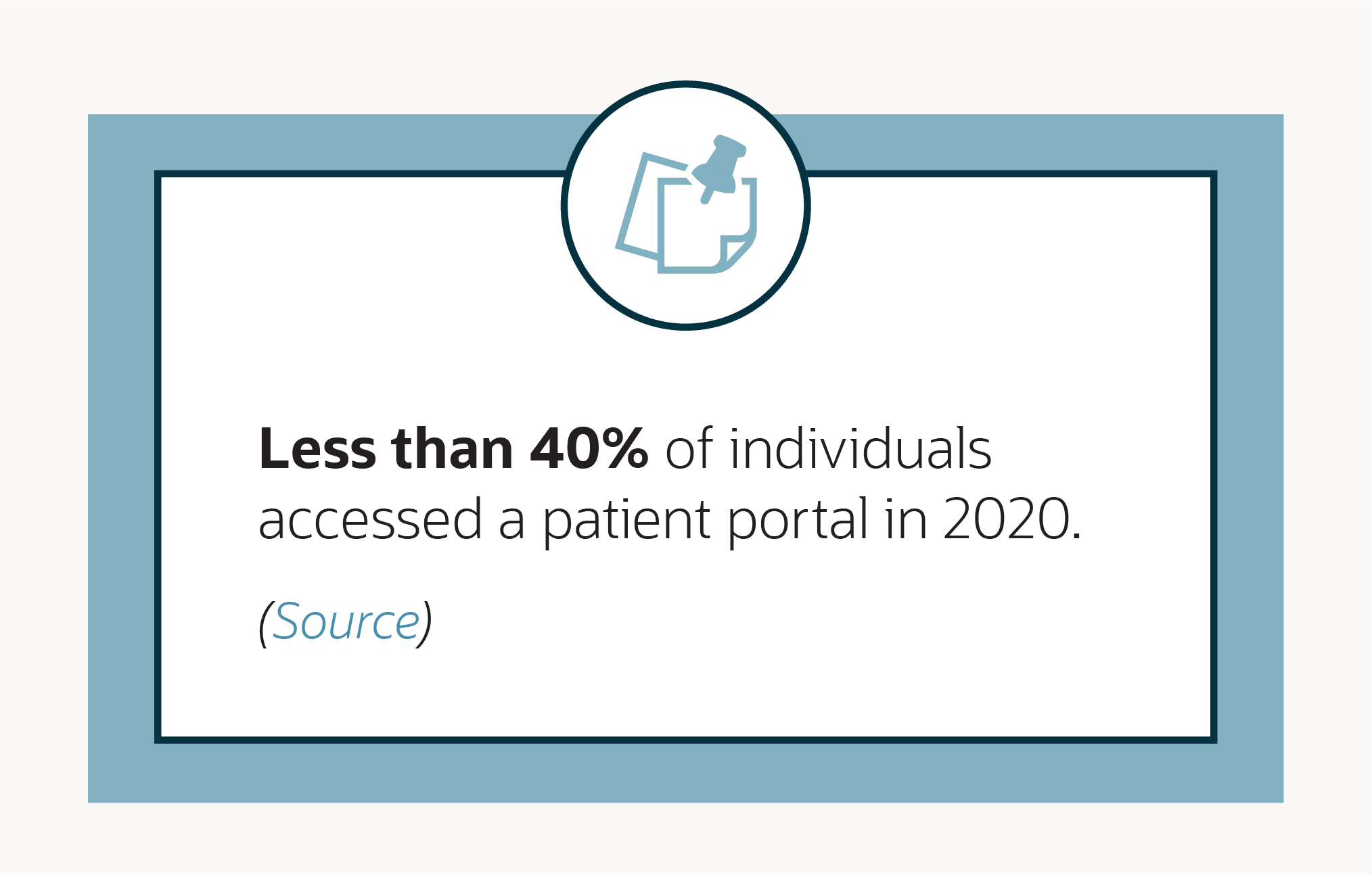What does it mean when we talk about “digital transformation” in healthcare? Well, that depends on who you ask. The challenge is that it means something different if you’re a patient, physician, administrative staff, or laboratory technician. Ultimately, digital transformation is about improving efficiency, value, and innovation—which all starts with meeting patients where they are.
See if this sounds familiar: you call to schedule an appointment with a new doctor and immediately receive a quick “Can I place you on a brief hold?” from the voice on the other end of the line. Queue the hold music and the occasional automated message, “We value your patience.” After a few minutes, you begin to wonder what else you could be doing with your time. When you’re finally connected with someone in the office, he or she seems rushed and overwhelmed by your new patient questions.
How is it that we can apply for a loan, book an international flight, and order groceries from our phone—all in a few minutes—yet the process of making a new patient appointment remains essentially unchanged from decades ago?
It’s become increasingly clear that convenience is critical for patient satisfaction, so let’s open the digital front door.
What is a digital front door strategy?
 A digital front door uses technology to bridge the interaction between patients and healthcare organizations. Maybe you’re thinking, “Hey, wait, don’t I already have this with my patient portal?” While it’s true that these portals have taken a step in the right direction, they still have limited adoption and require a login and password that you can never remember. Though your digital front door encompasses your patient portal, it doesn’t depend on it.
A digital front door uses technology to bridge the interaction between patients and healthcare organizations. Maybe you’re thinking, “Hey, wait, don’t I already have this with my patient portal?” While it’s true that these portals have taken a step in the right direction, they still have limited adoption and require a login and password that you can never remember. Though your digital front door encompasses your patient portal, it doesn’t depend on it.
Let’s look at some use cases that empower patients with the technology of a digital front door solution.
A digital front door allows patients to:
- Schedule appointments through an open access solution on the provider’s website, patient portal, or mobile application—even when the provider’s office is closed. This makes it more convenient for patients to manage their care, improving patient engagement and reducing no-show appointments.
- Navigate the pre-registration process, which can be time consuming (e.g., finding insurance and immunization information while on the phone) for patients and medical staff. Using a digital front door, patients can provide insurance information and medical history, and receive estimates for the cost of the visit.
- Use a conversational AI chatbot symptom checker to determine whether they should make an appointment, seek emergency care, or monitor symptoms at home. Helping patients determine next steps based on clinical best practices alleviates the burden on providers and supports patient care––where and when they need it.
Implementing a digital front door solution offers many benefits to both patients and providers. Tools such as Oracle Digital Assistant (ODA) drive patient engagement and provider efficiencies when integrated into healthcare organizations’ digital front door strategy.
Optimize healthcare interactions with ODA
ODA is an AI service that enables healthcare organizations to create personalized, conversational experiences for their business applications and patients through text, chat, and voice interfaces.
ODA is the tool that manages all communications within apps, between apps, between users, and between users, patients and apps. ODA is Oracle product agnostic and helps automate communication between external electronic health records, practice management systems, and patient portals, among other systems. Additionally, developers can easily create their own custom skills to automate customer experiences.
One of the best things about ODA is that it integrates with systems already in place. ODA unifies single-purpose chatbots within one digital assistant, making it easy for users to interact with multiple systems from a single conversation.
With ODA, customers like Yokeru are offering improved care for vulnerable individuals. During the COVID-19 pandemic, the Yokeru team identified an opportunity to empower local authorities to reach “digitally-excluded residents” via AI call centers. Not only did Yokeru cut costs by 70%, but its automated contact center called 7,000 residents in 20 minutes—which would otherwise take an employee 139 working days to accomplish.
When it comes down to it, implementing a front door strategy is ultimately about people. It’s no wonder that many healthcare companies are embarking on their digital transformation to provide a better experience for healthcare providers and patients alike.
A suite of healthcare solutions
ODA is one of many components required for a successful front door strategy; there are several other ways in which technology can be used to improve patient experiences and allow providers to focus on other higher-value work.
Oracle offers an ever-expanding list of cloud services addressing healthcare use cases that can optimize clinical and administrative workflows and deliver economic benefits across the continuum of care. Using services like data lakehouse on Oracle Cloud Infrastructure (OCI), you can gain new insights across disparate data sources such as web transactions, office visits, and phone transcriptions. To learn more, see our preconfigured data lakehouse architecture for health insurance analytics.
For anyone interested in AI and machine learning (ML), OCI Data Science is a fully managed, serverless platform for data science teams to build, train, and manage machine learning models. The OCI Data Science reference architecture supports multiple scenarios for the application of ML in healthcare.
Tools like these are driving the healthcare industry toward cloud adoption. To learn more about how you can use OCI for healthcare, contact one of our representatives.

